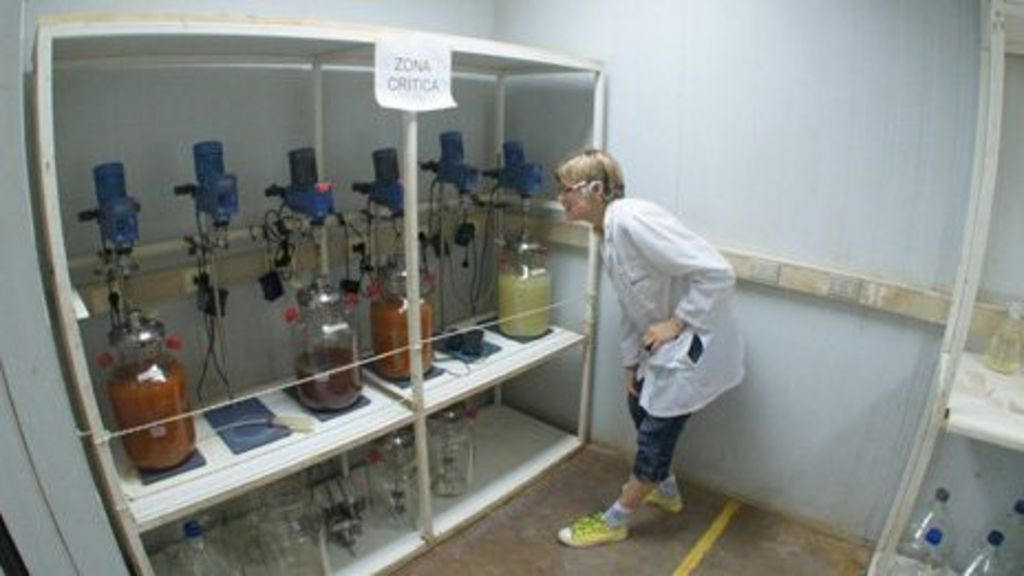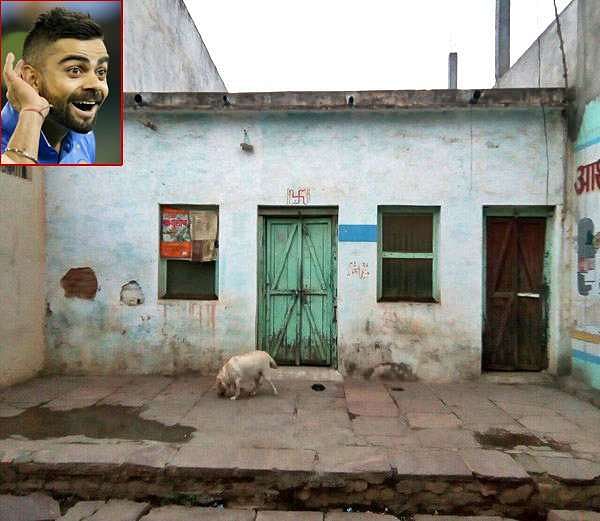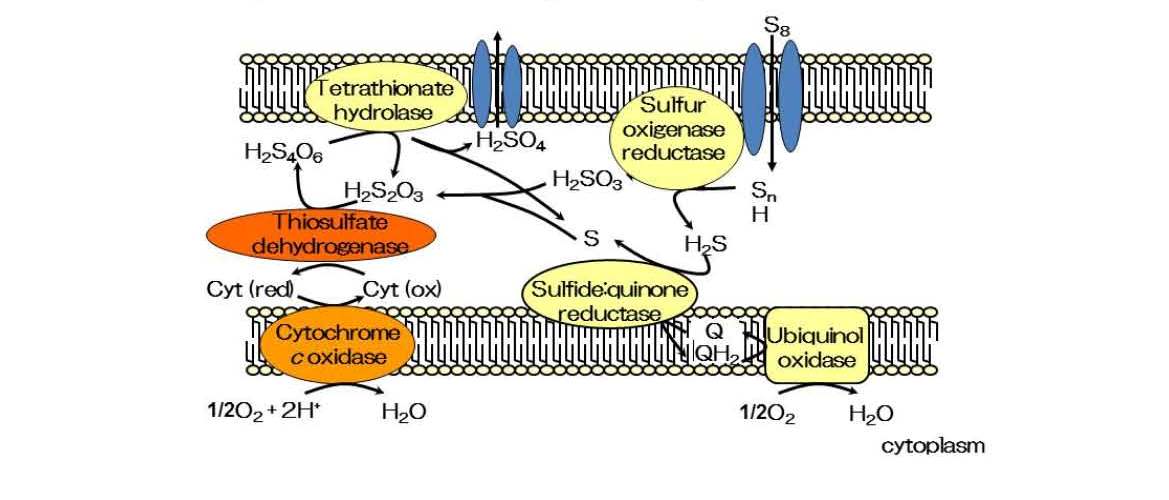biomining. use of organisms to promote the LEACHING (solubilization) of metals from their ores. ; use of organisms, such as BACTERIA and PLANTS, to accumulate metals, for example gold and silver, from mine tailings. The metals can then be recovered from the cells of the organism. Biomining is defined as the technologies that utilize microbial community for the extraction of metals from its ore or wastes and facilitate a greener recovery. In industrial bioleaching (biomining) three technical processes are differentiated: Heap or dump bioleaching, tank bioleaching, in situ or in place bioleaching. Today the recovery of copper from sulfide ores is the most important industrial application, and a significant proportion of the world copper production originates from heap or dump. Biomining also allows metal byproducts (such as silver) to the more readily recovered from processed ores than is the case with waste slags generated by pyrometallurgy. Development and evolution of biomining technologies. Biomining is the kind of technique promised by science fiction: a vast tank filled with microorganisms that leach metal from ore, old mobile phones and hard drives. Biomining is the biotechnology that uses microorganisms to recover metals, in particular copper and gold, from ores and concentrates. Having developed from a very simple operational (in terms of both engineering and biology) process, biomining has developed into a multifaceted technology, to the extent that many of the largest industrial. Biomining is the kind of technique promised by science fiction: a vast tank filled with microorganisms that leach metal from ore, old mobile phones and hard drives. Bioleaching (deutsch wrtlich: Biolaugung, genauer: mikrobielle Erzlaugung, selten Biomining) bezeichnet die Gewinnung von Schwermetallen aus ihren Erzen durch chemische Umwandlung von unlslichen Erzmineralen zu wasserlslichen Salzen durch Mikroorganismen. Dadurch knnen die Metalle aus dem Erz herausgelst werden. Biomining is the biotechnology that uses microorganisms to recover metals, in particular copper and gold, from ores and concentrates. Having developed from a very simple operational (in terms of both engineering and biology) process, biomining has developed into a multifaceted technology, to the extent that many of the largest industrial. Biomining is a metal extraction method that is based on the use of bacteria. This technology now accounts for around 15 percent of all copper mining worldwide, says Schippers. It accounts for around three percent of all gold mining and is used to a lesser degree in nickel, cobalt, and zinc mining. Biomining for InSitu Resource Utilization Darin Ragozzine Harvard University NASA Institute for Advanced Concepts Student Visions of the Futu Slideshare uses cookies to improve functionality and performance, and to provide you with relevant advertising. Biomining is a method of extracting minerals and metals from their parent ores using naturally occurring biological processes. The practice requires none of the environmentally damaging processes found in conventional refinement methods and instead relies entirely on the natural interaction of biological organisms. Biomining contributes to sustainable development in the same way all process do: it uses existing organisms and mechanisms in nature. Due to the fact that the over that the overall process of biomining is a more environmentally friendly alternative than that of conventional mining methods, it also improves recovery rates. The microbial populations of biomining communities are complex and diverse, including bacteria, archaea and fungi. Low pH, abundance of mineral particles, presence of microorganisms in biofilms and the species diversity of microorganisms inhabiting the biomining environment has made studying these populations difficult. biomining in reverse gear a process for using bacteria to extract metals from ores and waste materials in which the primary reaction is that of ferric iron reduction rather than ferrous iron MetallBiolaugung (Biomining) Haldenbiolaugung zur Kupfergewinnung in Chile Quelle: BGR. Beim Biomining werden spezielle Mikroorganismen eingesetzt. Biomining is the use of microorganisms in the recovery of metals from ores. During bioleaching, metals such as copper, nickel or zinc are oxidized through microbial action from the waterinsoluble sulfide to the soluble sulfate forms. Biomining refers to the extraction of valuable elements from mine waste for economic gain; bioremediation is more about reducing the environmental impact of mining activity. 15th International Conference on Environmental Science and Technology Rhodes, Greece, 31 August to 2 September 2017 CEST Biomining Biotechnological Systems (Bioleaching and Biosorption) for the Extraction and Recovery of Metals from Secondary Sources. Biomining is already in use in several countries, including South Africa, Brazil and Australia. Overall, some 20 of the world's copper production comes from bioleaching. The term biomining have been coined to refer to the use of microorganisms in mining processes. Biomining encompasses two related microbial processes that are useful in the extractive metallurgy of heavy metals: bacterial leaching, also known as bioleaching, and biooxidation. Biomining is mineral processing with microbes. Biomining is the process of using microorganisms (microbes) to extract metals of economic interest from rock ores or mine waste. Biomining techniques may also be used to clean up sites that have been polluted with metals. Biomining is the biotechnology that uses microorganisms to recover metals, in particular copper and gold, from ores and concentrates. Having developed from a very simple operational (in terms of both engineering and biology) process, biomining has developed into a multifaceted technology, to the Hi All, Colin here, your friendly neighborhood biomining remediationalist. Blog# 3 talked a bit about why knowing the remediation pathways of agriculture and acidified mine drainage are important. So Ill talk a bit more about BioMining Products history now and save PermaCycler for the next blog. (By the way, BioMining Products is your Best Management [ Biomining is already in use in several countries, including South Africa, Brazil and Australia. Overall, some 20 of the world's copper production comes from bioleaching. Biomining is a type of mining that is performed with the help of natural processes. Naturally occurring biological processes allow miners to extract minerals and different types of metals from ores. There is little environmental damage done in this process, for the interaction of. From spacecraft to electronics, space missions rely fully on metallic components but what if they didnt have to? A new NIAC study is looking into the possibility of using urban biomining. Biomining is an application of biotechnology in recovery of various minerals from ore. Biomining is defined as extracting mineral ores or enhancing the mineral recovery from mines using micr This paper reviews the current status of commercial biomining operations around the world, identifies factors that drive the selection of biomining as a processing technology, describes challenges to exploiting these innovations, and concludes with a discussion of biomining's future. Biomining, the use of microorganisms to recover precious and base metals from mineral ores and concentrates, has developed into a successful and expanding area of biotechnology. While careful considerations are made in the design and engineering of biomining operations, microbiological aspects have been subjected to far less scrutiny and control. Capture Acid Mine Drainage, Precious Metals and other elements passively with our patented Metal Removal Units. Ultra concentrated wetlands in a constructed environment make these the smallest footprint, highest efficiency solutions for a host of mining impacts or opportunities. Biomining is the biotechnology that uses microorganisms to recover metals, in particular copper and gold, from ores and concentrates. Having developed from a very simple operational (in terms of both engineering and biology) process, biomining has developed into a multifaceted technology, to the extent that many of the largest industrial. Biomining the Elements of the Future. contributor: The Conversation Biomining is the kind of technique promised by science fiction: a vast tank filled with microorganisms that leach metal from ore, old mobile phones and hard drives. Biomining is the use of microorganisms in the recovery of metals from ores. During bioleaching, metals such as copper, nickel or zinc are oxidized through microbial action from the waterinsoluble sulfide to the soluble sulfate forms. Biomining is defined as the technologies that utilize microbial community for the extraction of metals from its ore or wastes and facilitate a greener recovery. Stirred tank biomining Leaching from substrates with high mineral concentration Types of Biomining Expensive Time consuming Copper and refractory gold ores Thiobacillus is commonly used 11. This feature is not available right now. Biomining has enabled the transformation of uneconomic resources to reserves, and thus help to alleviate the challenges related to continually declining ore grades. The rapid advancement of microbial characterisation methods has vastly increased our understanding of. Preface Biomining is the generic term that describes the processing of metal containing ores and concentrates using (micro) biological technology. This is an area of biotechnology that has seen considerable growth in scale and Inject lowtemperature fluid mixed with bacteria works through cracks and fissures Microtubes process metal How it works Biomining Microtubes CubeSats Biomining takes advantage of microbes that eat rocks, or lithotrophs. The first example of such a rockmunching microbe, now known as Acidithiobacillus ferrooxidans, was discovered in the 1940s, but many more microbes, specifically species of bacteria and archaea, have been discovered since then. The twenty contributions selected as the main body of the text cover a wide variety of subjects, including biomining of base metals from sulphide minerals, microbial extraction of uranium from ores, spectroscopic study on the bioleaching of enargite using thermophile, and many others. Biomining is the biotechnology that uses microorganisms to recover metals, in particular copper and gold, from ores and concentrates. Having developed from a very simple operational (in terms of both engineering and biology) process, biomining has developed into a multifaceted technology, to the extent that many of the largest industrial stirred tanks and heaps throughout the world are. Universal Bio Mining improves the returns and reduces the impact of gold and copper mining. By dramatically increasing metals recovery, UBM will displace smelters and roasters, which generate immense amounts of CO2 and SO2. Biomining is a broad term that describes the processing of metal containing ores and concentrates of metal containing ore using microbiological technology. It is an alternative to more traditional physicalchemical methods of mineral processing. Biomining plant Commercial biomining are. Definition of biomining the process of extracting metals from ores or waste by using microorganisms to oxidize the metals, producing soluble compounds Abstract: Biomining is the extraction of specific metals from their ores through biological means usually bacteria. Although it is a new technique used by the mining industry to extract minerals such as copper. Die Aurex Biomining AG ist ein in Europa ttiges mit Sitz in der Schweiz und beschftigt sich mit dem Aufsuchen, Untersuchen und Entwickeln von wertvollen Rohstoff und Edelmetallvorkommen, vorwiegend kritischer Rohstoffe im.











